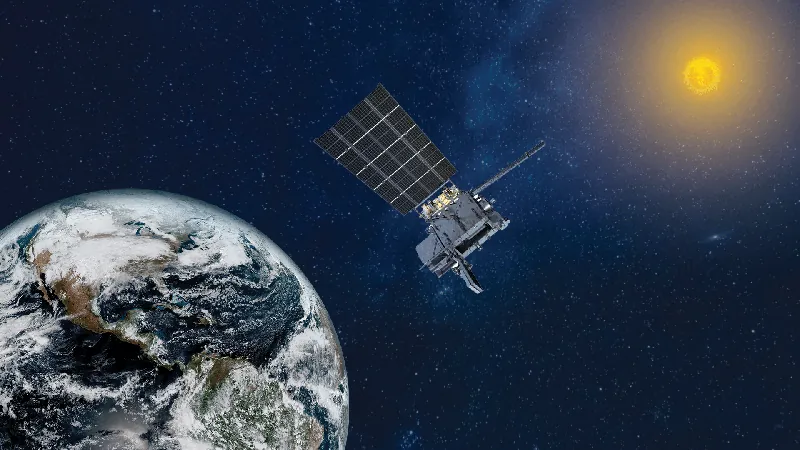
Revolutionizing Weather Forecasting: NOAA’s GOES-19 Satellite Is Here to Predict Solar Storms Like Never Before!
2025-04-10
Author: Jessica Wong
A New Era in Weather and Space Monitoring
The groundbreaking GOES-19 satellite has officially started its mission, setting the stage for a transformation in both weather and space weather forecasting. According to NOAA, this cutting-edge satellite delivers high-resolution images and instantaneous atmospheric data, enabling scientists to monitor everything from hurricanes and wildfires to severe storms and solar phenomena. It's not just a replacement for GOES-16; it’s a quantum leap in our ability to understand and predict environmental events!
Cutting-Edge Technology at Work
Equipped with an array of advanced tools, GOES-19 features NOAA’s pioneering compact coronagraph (CCOR-1). This remarkable instrument is designed to keep a close eye on solar activity, particularly dangerous coronal mass ejections (CMEs). These solar bursts can wreak havoc on Earth, disrupting communication lines, GPS functionality, and even power systems. The coronagraph cleverly blocks out the sun’s blinding light, allowing scientists to scrutinize the sun’s corona—and track these colossal and potentially hazardous energy eruptions.
Behind the Scenes: The Science of Solar Monitoring
Dan Lindsey, the GOES-R program scientist at NOAA, emphasized the meticulous work that goes into deploying this satellite: "We need to ensure that everything is lined up, and then all seven instruments have to be individually tested. They’re turned on, and sample data is collected." His dedication pours into this technology, marking a pinnacle in his career as it significantly bolsters solar storm forecasting.
The Game-Changing Impact of CCOR-1
The compact coronagraph on GOES-19 ushers in the potential for real-time solar corona monitoring, offering crucial early warnings about space weather events. Lindsey describes how this sophisticated tool works, stating, "It sort of blocks out the sun itself and allows us to take pictures of that corona. This helps us detect coronal mass ejections and anticipate their impacts on Earth." This monumental advancement enhances our ability to predict solar storms, potentially safeguarding critical infrastructure from unforeseen damage.
A Bright Future for Weather Forecasting
With the launch of the GOES-19 satellite, the landscape of both terrestrial and space weather forecasting is set to drastically improve. The integration of state-of-the-art technology not only enhances our predictive accuracy but also fosters a safer environment for everyone on Earth. Buckle up, because the future of weather monitoring is shining brighter than ever!




 Brasil (PT)
Brasil (PT)
 Canada (EN)
Canada (EN)
 Chile (ES)
Chile (ES)
 Česko (CS)
Česko (CS)
 대한민국 (KO)
대한민국 (KO)
 España (ES)
España (ES)
 France (FR)
France (FR)
 Hong Kong (EN)
Hong Kong (EN)
 Italia (IT)
Italia (IT)
 日本 (JA)
日本 (JA)
 Magyarország (HU)
Magyarország (HU)
 Norge (NO)
Norge (NO)
 Polska (PL)
Polska (PL)
 Schweiz (DE)
Schweiz (DE)
 Singapore (EN)
Singapore (EN)
 Sverige (SV)
Sverige (SV)
 Suomi (FI)
Suomi (FI)
 Türkiye (TR)
Türkiye (TR)
 الإمارات العربية المتحدة (AR)
الإمارات العربية المتحدة (AR)